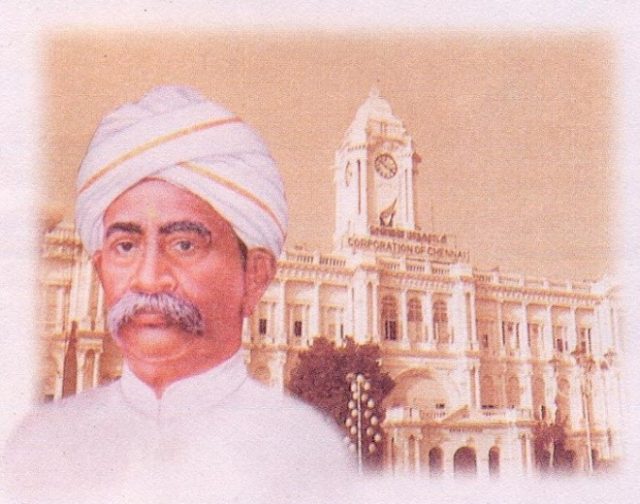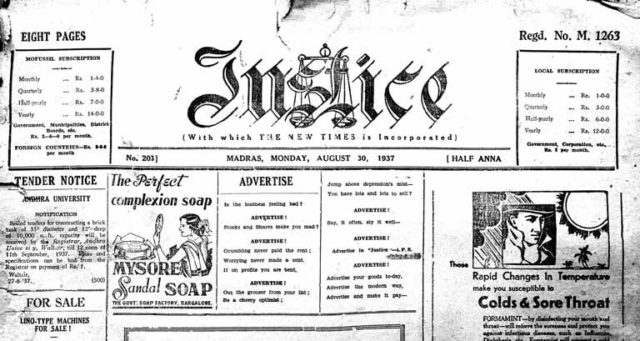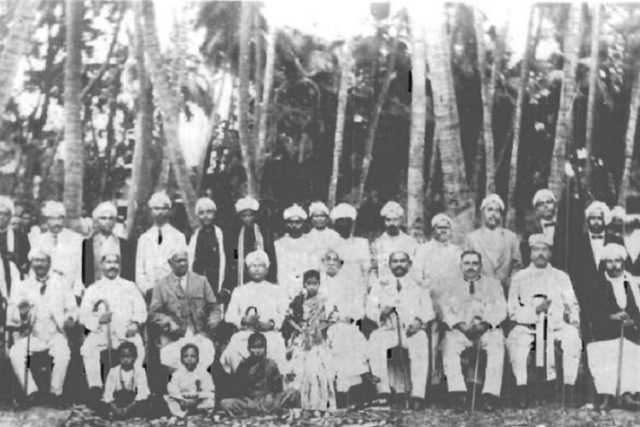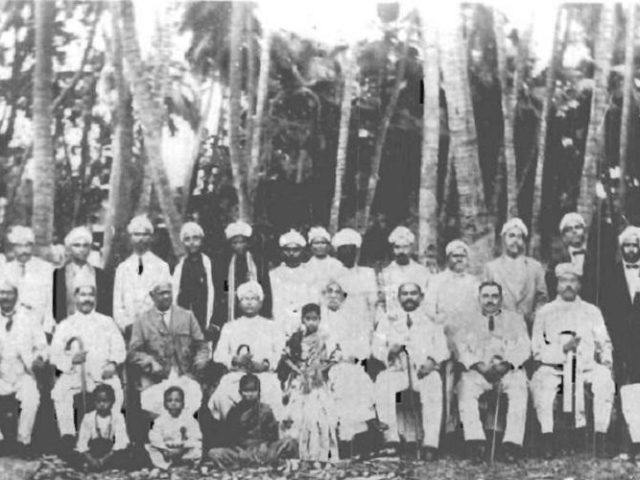PREVIOUS
Theagaraya Chetty
June 20 , 2019
2382 days
33809
0
- Sir Pitti Theagaraya Chetty was an Indian lawyer, industrialist and a prominent political leader from the erstwhile Madras province.

- He was one of the founders of the Justice Party in 1916 along with C. Natesa Mudaliar, Dr. T. M. Nair.
- Theagaraya Chetty is regarded as one of the founders of the non-Brahmin movement in Tamil Nadu and the first to lead the movement.
Early Life
- Theagaraya Chetty was born in Egathur, Madras Presidency in Telugu speaking Devanga family on 27 April 1852.
- On graduation in 1873, he entered public life and served as a member of the Corporation of Madras from 1882 to 1922.
- He served as a member or Councillor of the Corporation of Madras for 40 years from 1882 till 1922.
- He also served as the President of the Corporation of Madras from 1920 to 1923.
- He was the first non-official President of the Madras Corporation.
- He was elected to the Madras Legislative Council in 1910.
- He was one of the founder-members of the South Indian Chamber of Commerce and served as its President from 1910 to 1921.
- Theagaraya Chetty fought on behalf of the Indian Patriot newspaper and its editor Karunakara Menon against Dr T. M. Nair who later became his close associate.
- Theagaraya Chetty served as a member of the Indian National Congress before founding the South Indian Liberal Federation in 1916.
Reuniting
- At the time in 1912, there were two groups in the Madras Corporation Council.
- The Non-Brahmin group was led by the legendary Sir Pitti Theagaroya Chetti.
- The other group was led by a well-known medical practitioner and social activist T.M. Nair.
- The two leaders often clashed at Council meetings even though both were non-Brahmins.
- Natesa Mudaliar realised that if these two leaders could be brought together it would give the Non-Brahmin movement a fast forward push.
- Thus, Natesa Mudaliar was able to reconcile their differences.
Dravidian Movement
- The Madras Non-Brahmin Association was formed in 1909 by two lawyers from Madras city, P. Subramanyam and M. Purushotham Naidu.
- Theagaraya Chetty did not involve himself in the movement until 1912, when the Madras United League was formed.
- It was formed by disaffected non-Brahmin members of the bureaucracy like Saravana Pillai, G. Veerasamy Naidu, Doraiswami Naidu and S. Narayanaswamy Naidu with C. Natesa Mudaliar as its Secretary.
- Later in 1912 itself (October), Madras United league was renamed as Madras Dravidian Association.
- It was the first time the word Dravidian was used for a political entity.
- Panaganti Ramarayaningar, later the Raja of Panagal was elected its President.
- As a part of its programme, the Madras Dravidian Association conducted a hostel called "Dravidian Home"
- It was for the benefit of non-Brahmin students who did not have hostel privileges due to caste-based discrimination.
- In 1914, Natesan ran such a Dravidian hostel in Triplicane, Madras.
- There was a meeting held in Madras in November 1916 by a group of about thirty people, including Theagaraya Chetti and Dr. T. M. Nair.
- They established the South Indian People's Association (SIPA) to publish English, Tamil and Telugu newspapers to publicise grievances of non-Brahmins.
- Theagaraya Chetty became the secretary of SIPA.
- The newspaper was named Justice and started publishing from 26 February 1917 onwards.

- T. M. Nair was its first Editor.
- The meeting also formed the "South Indian Liberal Federation" (SILF) as a political association.
- Later, the association came to be popularly called the "Justice Party" due to the publication of the Justice Magazine.

- Theagarya served as the first President of the federation from 1917 till his death in 1925.
- The Justice Party sought a remedy by the earliest adoption of reservation and secularisation by law.
- Along with the Justice Party, EVR Periyar's Self Respect Movement, started in 1925, joined hands to form the Dravida Kazhagam (DK) which served the anti-Brahmin, anti-North Indian and anti-Congress outfits.
In Elections
- When elections were held in December 1920 in the Madras Presidency as per the Montagu-Chelmsford reforms, the Justice Party obtained a comfortable majority by winning 63 seats out of 98.
- The Governor of Madras Lord Wellington invited Theagaraya Chetty to form the Government.
- However, Theagaraya Chetty refused on account of the ethical rule that head of a political party can't hold a post in the cabinet too.
- As a result, A. Subbarayalu Reddiar was appointed Chief Minister.
- Subbarayalu Reddiar had two Cabinet members, the Raja of Panagal and Sir Kurma Venkatareddi Naidu.
Last Stage
- Theagaraya Chetty died on 28 April 1925.

- He was succeeded by the Raja of Panagal as the President of the Justice Party.
His Legacy
- The Government honoured him with Rao Bahadur in 1909, Diwan Bahadur in 1919, and Sir in 1921.
- He is usually credited for the victories of the Justice Party in the 1920 and 1923 elections.
- North Madras Hindu Secondary School at Old Washermanpet in Chennai was founded in 1897 by Theagaraya Chetty and his father, as a school for the less privileged locals.
- Later it was transformed into Sir Theagaraya College in 1950 by his grandson.
- He is credited with the idea of serving mid-day meals to school children.
- The first midday meal in Chennai was served in the corporation school in Thousand Lights of Chennai in 1920.
- At Ripon Building, home to the Corporation of Chennai, the second oldest in the world, stands a statue dedicated to Sir Theagaraya Chetty.

- T.Nagar, a locality in Chennai which is named after him, was constructed between 1923 to 1925 by the Madras Presidency Government of the Raja of Panagal.
- Because of his love for white dresses, Theagaraya was aptly named Velludai Vendar.

- - - - - - - - - - - - - - -
Leave a Reply
Your Comment is awaiting moderation.


